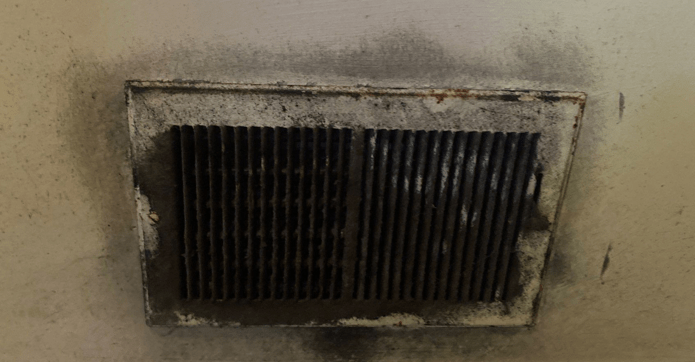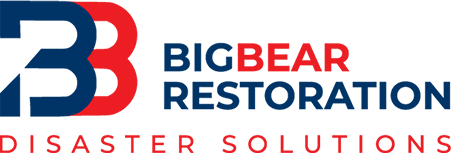Mold in HVAC systems is a serious issue that not only affects indoor air quality but also can lead to health problems and increased energy bills. In Marietta, the combination of high humidity and temperature fluctuations makes HVAC units especially vulnerable. We spoke with indoor air quality experts to understand why mold develops in these systems and what you can do to keep your home safe.
Why Mold Grows in HVAC Systems?
.2503180837126.png)
Mold needs three things to grow: moisture, an organic surface, and darkness. HVAC systems often provide these conditions due to:
Condensation: Temperature differences between cold air from the ducts and warm indoor air can lead to water buildup.
Poor Maintenance: Dust, debris, and organic particles accumulate on filters and within ducts, providing food for mold.
Leaks or Poor Sealing: Minor leaks or gaps in the unit create moist, dark spots where mold thrives.
According to Dr. Jane Mitchell, an indoor air quality expert, "Mold spores can circulate through HVAC systems, triggering allergies, respiratory problems, and even long-term damage to your unit."
Knowing how to spot HVAC mold early can save you from costly damage and health risks.
5 Warning Signs of HVAC Mold
.2503180907371.png)
1. Persistent Musty Odor ⚠️
If you detect a damp, musty smell each time your HVAC system is operating, it may indicate that mold is developing within your air ducts. This unpleasant odor is often a warning sign that moisture is present, creating an ideal environment for mold growth, which can pose health risks and affect indoor air quality.
🔎 Why does this happen?Mold releases microbial volatile organic compounds (MVOCs) that create a strong, musty odor, especially in enclosed spaces like ductwork.📌 Expert Insight:
The Environmental Protection Agency (EPA) warns that mold-related odors in HVAC systems are often the first indication of hidden mold growth.
2. Increased Allergy or Respiratory Issues ⚠️
Are you finding yourself sneezing, coughing, or dealing with itchy eyes every time your air conditioning system is running? This could be a sign of mold spores circulating through your HVAC system. These spores can lead to various health issues, making it essential to address the problem promptly.
🔎 Why does this happen?Airborne mold spores can trigger respiratory issues, particularly for those with asthma or allergies.📌 Important Fact:
A National Institute for Occupational Safety and Health (NIOSH) study found that mold exposure in homes can increase asthma symptoms by up to 30%.
3. Visible Mold on Vents or Filters ⚠️

If you notice black, green, or white spots appearing on your air vents, filters, or the surfaces of your ducts, it is a strong indication that mold may be present within your HVAC system.
🔎 Why does this happen?
Dust and moisture create the ideal breeding ground for mold, especially in neglected HVAC systems.
📌 Did You Know?
The American Society of Heating, Refrigerating and Air-Conditioning Engineers (ASHRAE) states that mold buildup inside HVAC systems can reduce efficiency by up to 20%.
4. Excess Moisture or Condensation ⚠️
Have you observed condensation forming on your HVAC unit, vents, or ducts? This excess moisture is not just a minor inconvenience; it serves as a crucial warning sign that mold could potentially be lurking in your home.
🔎 Why does this happen?
- Poor insulation can cause humidity buildup inside ducts.
- A clogged drain pan or faulty drainage system allows standing water to accumulate.
📌 Preventive Tip:
Regular HVAC maintenance and ensuring proper drainage can significantly reduce moisture levels and prevent mold growth.
5. Higher Energy Bills and Reduced Efficiency ⚠️
If you notice that your HVAC system is running longer than usual or if you find that your energy bills have spiked significantly, it may be a sign that mold is obstructing airflow. This blockage can lead to inefficient operation and increased costs.
🔎 Why does this happen?
Mold can clog filters, vents, and evaporator coils, forcing the system to work harder.
📌 Energy Impact:
The Department of Energy (DOE) reports that a clogged HVAC system can increase energy consumption by up to 25%.
How to Prevent HVAC Mold in Marietta
The Environmental Health Institute recommends these preventive steps to avoid mold buildup in your HVAC system:
✅ Schedule Regular Maintenance → Have your HVAC unit professionally inspected and cleaned every 6–12 months.
✅ Replace Filters Frequently → Use HEPA filters and change them as recommended by the manufacturer.
✅ Control Indoor Humidity → Use dehumidifiers to keep indoor humidity levels below 50%.
✅ Ensure Proper Drainage → Make sure drain pans and AC coils are free of standing water.
✅ Seal Any Leaks → Address leaky ductwork to prevent moisture buildup inside the system.
When to Call a Professional
If you notice any of these HVAC mold warning signs, it’s essential to act fast before the problem worsens.
Big Bear Restoration offers expert HVAC mold inspections and professional cleaning services in Marietta and throughout Cobb County.


.2503181241293.jpg)